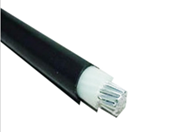

NigelS:
Thanks Dave, yes, I should not have used the term "double insulation" in my last post. You're also right in assuming that they were cheap.
No need to apologise really ... Regulation 412.2.4.1 (ii)(a) says that a cable, properly installed in accordance with Chapter 52, in which the insulated conductors are mechanically protected by a non-metallic sheath, are deemed to meet the requirements of double or reinforced insulation.
We're about to take you to the IET registration website. Don't worry though, you'll be sent straight back to the community after completing the registration.
Continue to the IET registration site